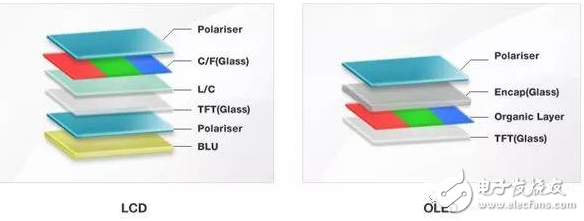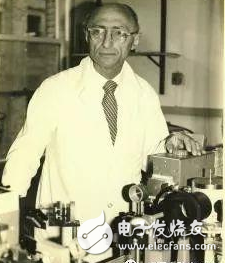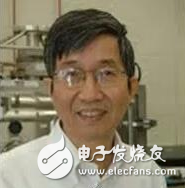LED screens are often considered the most space-expanding display technology available today, but many people still have misconceptions about them—especially when it comes to issues like burn-in. Despite this, a growing number of notebooks are now experimenting with OLED screens, driven by their unique advantages.
More and more notebook manufacturers are starting to incorporate OLED displays into their devices. As a new generation of screen technology, OLEDs offer several benefits, such as no need for a backlight, self-illumination, wider viewing angles, richer color reproduction, better energy efficiency, and even the ability to be flexible or curved. These features make them highly appealing for modern devices.
However, the adoption of OLEDs in notebooks is still limited. There are frequent reports of issues like burn-in, which raise concerns about reliability and long-term performance. What exactly are the pros and cons of OLED screens? How do they compare to traditional LCDs? This article aims to explore the past and present of OLED technology to help you understand its potential and limitations.

**LED screens of past and present**
Organic Light-Emitting Diode (OLED) is also known as Organic Electroluminescence Display (OELD). Unlike traditional liquid crystal displays (LCDs), which rely on a backlight, OLEDs emit light themselves. They offer advantages such as wide viewing angles, high contrast, low power consumption, fast response times, full-color display, and a simpler manufacturing process. However, they still face challenges in terms of cost, technology maturity, lifespan, resolution, and color accuracy compared to LCDs.
OLED displays can be categorized into monochrome, color, and full-color types, with full-color being the most technically challenging. They are also divided into passive matrix (PM-OLED) and active matrix (AM-OLED) based on driving methods.
Another classification includes organic light-emitting diodes (OLEDs) and polymer light-emitting diodes (PLEDs). While PLEDs offer flexibility and large-area display capabilities, current market products mainly use OLEDs due to issues with product longevity.

The first observation of electroluminescence in organic materials was made in the 1950s by André Bernanose and his team at Nanxun University in France. In 1960, Martin Pope and his colleagues at New York University developed ohmic contacts with organic crystals, laying the foundation for charge injection in modern OLEDs.
Pope's team later observed direct electroluminescence from a single tantalum crystal and a tetraphenylene-doped germanium crystal under vacuum, proposing the mechanism of field-accelerated electron excitation leading to molecular fluorescence.
Anthracene, commonly known as green oil brain, is a condensed aromatic hydrocarbon with a molecular formula of Câ‚â‚„Hâ‚â‚€. It has a blue-violet fluorescence, is toxic, and dissolves in various organic solvents.

**Martin Pope**
In 1965, Pope’s team reported that electroluminescence in germanium crystals occurred due to the recombination of heated electrons and holes. At the same time, W. Helfrich and WG Schneider from Canada achieved dual injection electroluminescence in a germanium crystal using both hole and electron injectors.
Also in 1965, Dow Chemical researchers patented a method involving high-voltage alternating current to drive an insulating phosphor thin layer, forming an electroluminescent element.
The first electroluminescence in polymer films was observed by Roger Partridge at the UK National Physics Laboratory. Their findings were patented in 1975 and published in 1983.
Finally, Dr. Deng Qingyun, who joined Kodak’s Rochester Laboratory in 1975, accidentally discovered OLEDs while working on organic battery research. One night, he returned to the lab and noticed an experimental organic battery glowing in the dark, sparking his interest in organic light-emitting diodes.
In 1987, Deng and his colleague Steven developed the first low-voltage, high-efficiency OLED using a two-layer organic structure similar to a semiconductor PN junction, paving the way for commercial OLED displays. Deng is widely regarded as the "father of OLED."
OLED stands for Organic Light-Emitting Diode, and the name was coined by Deng Qingyun.

**Dr. Deng Qingyun**
Born in Hong Kong, Deng received a B.S. in chemistry from the University of British Columbia and a Ph.D. in physical chemistry from Cornell University in 1975.
In 1990, a laboratory in Cambridge, England, successfully developed a polymer organic light-emitting element. The discovery of CDT (Cambridge Display Technology) in 1992 led to a different approach to OLED development, making them more widely applicable. Today, most OLEDs are based on AMOLED technology.

**OLED screen prototype**
The main difference between LCD and OLED is that LCD pixels do not emit light, while OLED pixels are self-illuminating and don’t require an external light source. Many consider OLEDs to be a more advanced technology than LCDs.
HIFU Piezoelectric Ceramic Parts
High Intensity Focused Ultrasound (HIFU) technology is to focus ultrasound on a single point to produce high energy, function on the dermis and SMAS layer of skin, stimulate the proliferation and recombination of collagen, effectively achieve the effect of compact contour and smoothing lines.
Focused ultrasound does not heat the skin surface, nor does it need to pass through the skin as a medium for the transmission of laser energy, so it does not affect the tissue on the skin surface and the tissue through which the laser passes, of course, there will be no excessive heat residue on the skin surface. In this way, the epidermis will not be affected by heat, which can reduce the Eastern people's thermal reaction easily, and greatly reduce the chance of scald. Focused ultrasoundtherapy produces thermal coagulation points in the SMAS layer, and the thermal effect diffuses outward from the coagulation points, so the heat source is concentrated in the SMAS layer to be treated. It can produce more collagen denaturation.
Ultrasonic Transducer Component,Piezo Crystal For Vibration Transducer,Piezoelectric Ultrasonic Rings,High Power Ultrasonic Machining
Zibo Yuhai Electronic Ceramic Co., Ltd. , https://www.yhpiezo.com